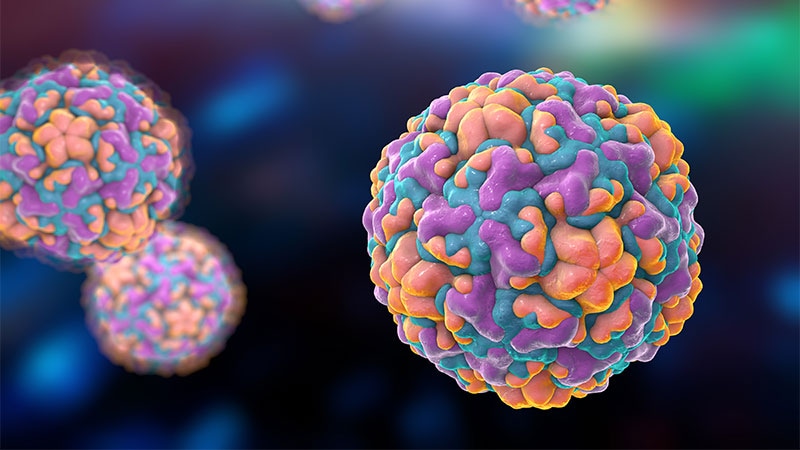Asthma Severity and Exacerbations Linked to RV Infection
Core Concepts
HRF and HRF-reactive IgE play a crucial role in asthma severity and exacerbations, especially in cases induced by rhinovirus (RV) infection.
Abstract
TOPLINE:
Immunological and mRNA assays support the role of histamine-releasing factor (HRF) in asthma severity and exacerbation.
METHODOLOGY:
Clinical data compared healthy controls with asthma patients from different cohorts.
Enzyme-linked immunoassay tests quantified total IgE, IgGs, and IgG1 levels in human sera samples.
Anti-IgE stimulation experiments characterized bronchoalveolar lavage (BAL) cell supernatants.
Effect of RV infections and allergens on HRF secretion was evaluated.
TAKEAWAY:
Patients with severe asthma had significantly higher HRF-reactive IgE and total IgE levels.
HRF-reactive IgGs and IgG1 levels were lower in asthma patients.
Inhibiting HRF and HRF-reactive IgE interactions could be a therapeutic target for severe asthma.
SOURCE:
Study led by Yu Kawakami, MD, published in the Journal of Allergy and Clinical Immunology.
LIMITATIONS:
Small sample sizes and age differences between cohorts are noted limitations.
DISCLOSURES:
No conflicts of interest reported by the authors.
Asthma Severity, Exacerbations Increase With RV Infection
Stats
HRF-reactive IgE and total IgE levels in serum were significantly higher in patients with severe asthma.
RV infection induced HFR secretions from respiratory epithelial cells.
Quotes
"Inhibiting HRF and HRF-reactive IgE interactions can be a preventative/therapeutic target for severe and RV-induced exacerbated asthma conditions."
Key Insights Distilled From
by Terry L. Kam... at www.medscape.com 07-17-2023
https://www.medscape.com/viewarticle/994442
Deeper Inquiries
How can the findings of this study impact the development of new asthma treatments?
The findings of this study suggest that inhibiting histamine-releasing factor (HRF) and HRF-reactive IgE interactions could be a promising target for the development of new asthma treatments, especially for severe and rhinovirus (RV)-induced exacerbated asthma conditions. By understanding the role of HRF in asthma severity and exacerbations, researchers and pharmaceutical companies can potentially develop therapies that specifically target this pathway. This targeted approach may lead to more effective and personalized treatments for asthma patients, ultimately improving their quality of life and reducing the frequency of exacerbations.
What potential challenges might arise in targeting HRF and HRF-reactive IgE interactions for asthma therapy?
While targeting HRF and HRF-reactive IgE interactions shows promise for asthma therapy, there are several potential challenges that may arise. One challenge is the complexity of the immune response in asthma, as it involves multiple pathways and interactions. Targeting a specific factor like HRF may not address the full spectrum of asthma pathogenesis, leading to limited efficacy in some patients. Additionally, developing drugs that specifically inhibit HRF interactions without causing unwanted side effects or disrupting other immune functions can be challenging. Furthermore, individual variability in HRF levels and responsiveness to therapy may complicate treatment outcomes and require personalized approaches.
How can understanding the role of histamine-releasing factor in asthma lead to advancements in other respiratory conditions?
Understanding the role of histamine-releasing factor (HRF) in asthma can potentially lead to advancements in other respiratory conditions by uncovering common pathways and mechanisms shared among different diseases. Since HRF is implicated in asthma severity and exacerbations, similar roles of HRF may exist in other respiratory conditions characterized by inflammation and immune dysregulation. By studying the effects of HRF in asthma and its interactions with other factors, researchers can gain insights into how HRF contributes to respiratory diseases beyond asthma. This knowledge can inform the development of novel therapies that target HRF-related pathways in a broader range of respiratory conditions, potentially improving treatment options for patients with diverse respiratory disorders.
0
